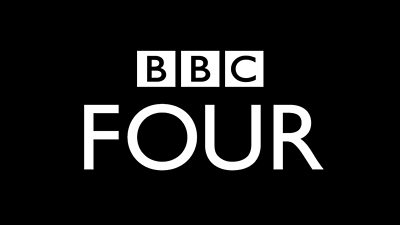The Last Igloo
The Last Igloo is a very simple film: the story of one man - an indigenous hunter called Julius - as he sets out from an Inuit settlement into the wilderness of Greenland to fish, hunt, and eventually build an igloo.

The wilderness of the frozen North is fascinating, it’s one of the planet’s last frontiers.
The Last Igloo is a very simple film: the story of one man - an indigenous hunter called Julius (pictured above) - as he sets out from an Inuit settlement into the wilderness of Greenland to fish, hunt, and eventually build an igloo. Of course, making something simple means that every detail is amplified. In one way, that was the point of the film - we are so relentlessly deluged with information that it’s easy to forget that TV should also be about giving us space to think and to feel.
Witnessing Julius’ life on a very sensory level - as this film allows the viewer to do - you realise that the apparent simplicity of life in the arctic belies extraordinary expertise, complexity and a constant battle against an environment where a single mistake can cost your life. Because The Last Igloo is all about immersing the viewer in a landscape of snow and ice, the beautiful scenes, filmed and directed with great skill by Christian Collerton, needed to be matched by the sound. For that, soundman Mick Duffield recorded in surround sound, not only above ground, but beneath the sea ice, and renowned Icelandic composer Biggi Hilmars created a score that feels as though it emerges almost naturally from the mountains and glaciers of Greenland.
Above all, The Last Igloo is a testament to Julius and the native people of Greenland. Julius was a dream contributor - not only for his abilities as a hunter and igloo builder - but for his facility to talk about his way of life with lyricism and depth of thought. But Julius’ generation of hunters are possibly the last. The great poignancy of the film is that it captures a world that is, due to climate change, literally melting away, and may soon be gone forever.
FS
Q&A with producer and director Christian Collerton

What attracted you to the Last Igloo project?
The wilderness of the frozen North is fascinating, it’s one of the planet’s last frontiers. The hunters of East Greenland are at a crossroads as global warming and social and technological change is rendering their traditional roles obsolete. On a personal level I think our modern world is so hyper-connected there was something really attractive about going somewhere with no TV, no internet (or even roads for that matter) and exploring the wilderness. Like many people I live my life on my phone and online and I wonder whether we are losing our relationship with nature. The way we tell the hunter’s story was a conscious riposte to the white noise that drowns out much of modern life as we can enjoy wallowing in all the tiny details of his adventure on the ice.
What challenges did you encounter while filming?
The temperatures of -15C meant our camera equipment was really put to the test - one of our drones broke almost immediately and one of our main cameras packed up not long after that. Ironically, though, it was global warming that turned out to be our biggest foe: The sea ice hadn’t formed in several places, but more importantly it proved difficult for Julius - the Inuit hunter we were filming with - to find the right snow to build his igloo (igloos require a very specific hard-packed snow the locals call Pugaq). Climate change is one of the central themes of the film but it also threatened to stop us making it.
What was the most memorable moment from filming?
The whole experience of life in remote East Greenland, filming on the sea ice and documenting the hunting skills of Julius was a real privilege but the most memorable moment came at the end of one of our final filming days. We had just finished building the igloo and the film was all but done. We were just about to get the skidoos back to the village when suddenly the night sky lit up with huge dancing sheets of green and blue - the Northern Lights. The film is a visual poem to the Inuit lifestyle, how it dovetails with the environment and how both are in danger or dying out so it was fitting that nature should have the last word.
Why should people watch the film?
The film is an immersive sensory experience. Our digital age is a constant drain on our attention, we are surrounded by phones and computers. Modern life is an endless, anxiety-inducing information assault and the style of much of modern television contributes to this, aggressively throwing the most dramatic footage at the viewer. This film is the antidote to that, it celebrates both the tiny detail of the Inuit skills as well as the breath-taking grandeur and silence of the East Greenlandic landscape.
What do you hope they’ll take away from it?
Firstly I hope they enjoy the treat of being immersed in the world of the East Greenlandic hunter, riding with him on his dog-sled, hunting, climbing mountains and building an Igloo under the Northern Lights but the world of the East Greenlandic hunter is teetering on the brink of extinction. The Last Igloo is an attempt to document a dying way of life before it’s too late. It’s easy to think of climate change as a remote problem but to the people of Greenland and the rest of the Arctic it’s very real. As Julius says the world is literally melting away before his eyes.
